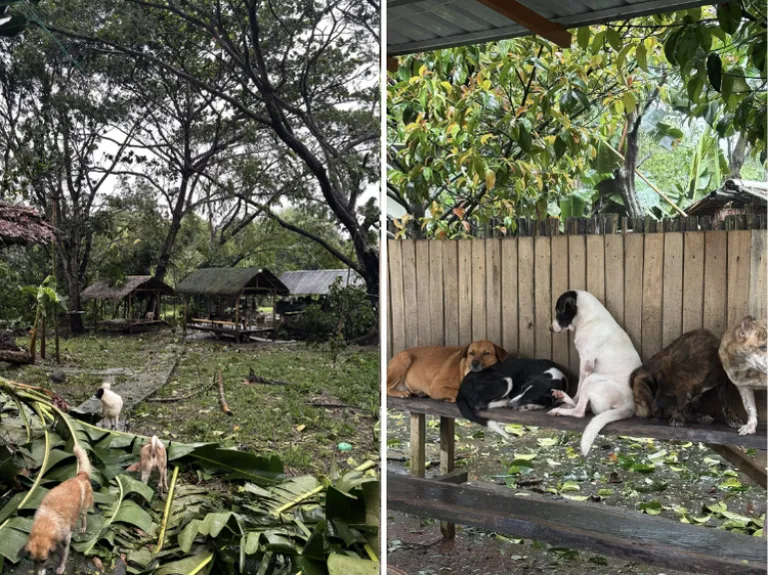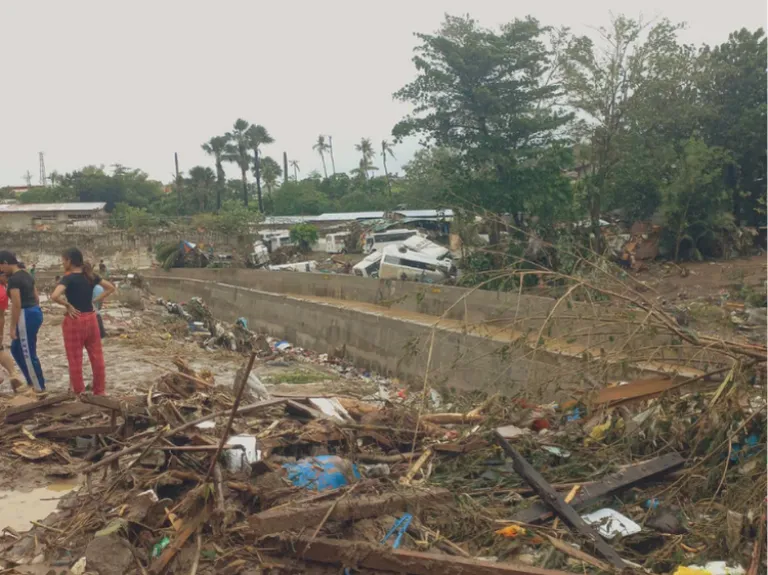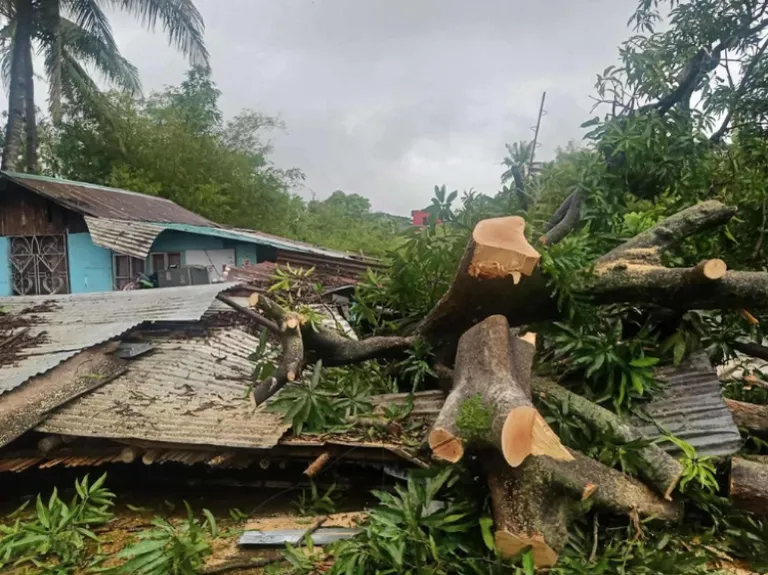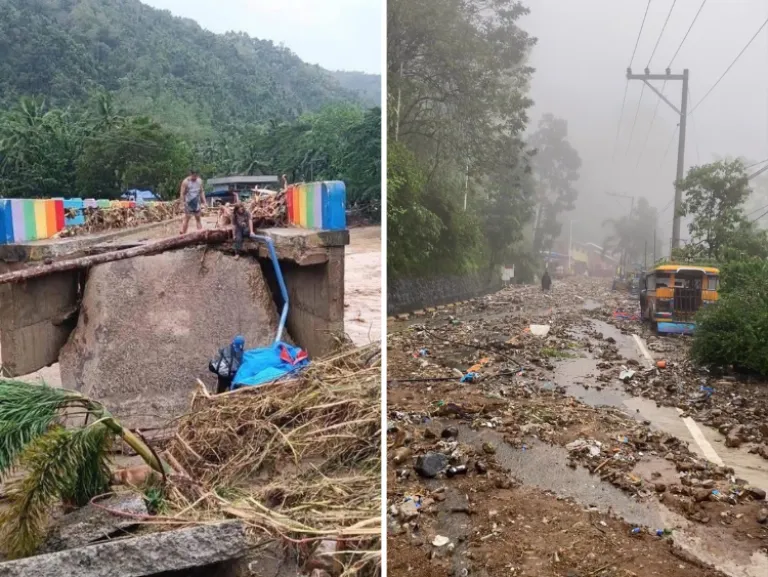Our favourite places to stay on this sleepy Cebu island.
Cebu Back-to-Back Disaster: Typhoon Kalmaegi Devastates Province Days After 6.9-Magnitude Quake

Cebu and Visayas in general just can’t catch a break. Barely a month after a powerful 6.9-magnitude earthquake rocked the province, Typhoon Kalmaegi (locally known as Tino) unleashed massive floods across the province, leaving dozens dead and thousands displaced.
Governor Pamela Baricuatro declared Cebu in a state of calamity on Tuesday night, allowing local governments to use emergency funds for rescue, relief, and rehabilitation. The typhoon, one of the strongest to hit the country this year, brought torrential rains that submerged entire neighbourhoods, swept away homes, and paralysed power and communication lines in several towns and cities.
Videos from the ground showed cars and even shipping containers drifting through floodwaters, while residents climbed onto rooftops to escape the rising currents. Cebu City, Talisay, and nearby areas were among the hardest hit.
According to provincial authorities, most of the deaths were caused by drowning as flash floods from overflowing rivers tore through residential zones. Thousands of people were evacuated to schools and gymnasiums now serving as temporary shelters.
Also read: How to Help Typhoon Kalmaegi (Tino) and Typhoon Fung-wong (Uwan) Victims and Avoid Donation Scams
Cebu’s hard-hit cities face another blow

Image credit: Pawssion Project Facebook
Families across Cebu, especially those still recovering from last week’s 6.9-magnitude quake, were displaced again as Typhoon Kalmaegi tore through the province.
In Bogo City, the earthquake’s epicentre, residents who had been living in temporary tents were evacuated ahead of the storm. Their tents were dismantled, and they were moved to sturdier shelters or modular houses provided by the local government and the Philippine Red Cross.

Image credit: Pawssion Project Facebook
Meanwhile, Cebu City and nearby areas in Metro Cebu suffered some of the worst flooding, with streets turning into rivers and rescue teams using boats to reach trapped residents. Power and communication lines were cut in several areas as local authorities began clearing blocked roads and fallen trees.
Junie Castillo, OCD spokesperson, said the tents had to be dismantled temporarily because they could not withstand the strong winds brought by the typhoon.
Cleanup operations are ongoing across northern and central Cebu, where debris and thick mud continue to make road access difficult.
Also read: Cebu Earthquake Wrecks Heritage Churches, Strands Tourists: What Travellers Need to Know
State of calamity

Image credit: Immhary_ | X
Under Executive Order No. 68, all government offices in Cebu were authorised to tap into their Quick Response Funds to support ongoing rescue and rehabilitation. A price freeze on basic goods was also enforced to prevent overpricing during the emergency.
Governor Baricuatro said that while strong winds were expected, it was the water that truly brought devastation. “The floodwaters are just devastating,” she said in a statement.
The storm, which has since weakened, is forecast to move across the Visayas and exit into the South China Sea by Wednesday.
Also read: Marcelo Fernan Bridge Cebu Stands Strong After 2025 Earthquake
Philippine suffers from “disaster fatigue” and has a bigger problem

Image credit: TeacupPH | X | Iloilo City hit by Typhoon Kalmaegi
While Cebuanos continue to rebuild, the latest World Risk Report 2025 shows that these back-to-back disasters are part of a larger pattern of vulnerability.
The report, published by Bündnis Entwicklung Hilft together with the Institute for International Law of Peace and Armed Conflict (IFHV) at Ruhr University Bochum, ranked the Philippines first among 193 countries most at risk from disasters, particularly flooding.

Image credit: diapolym | X
Researchers found that the country’s exposure to extreme weather events remains high due to its fragmented geography, weak infrastructure, and poor land-use planning. Flood risk also varies greatly between regions, depending on how well local communities manage drainage systems and natural water catchments.
Climate experts and lawmakers are calling for more nature-based and sustainable solutions, such as reforestation, watershed protection, and urban redesign, to help communities adapt to stronger and more frequent storms. They warn that traditional flood control projects alone will not prevent future disasters if poor planning and corruption persist.
For residents in Cebu now staying in evacuation centres, the country’s top global ranking for flood risk feels less like a statistic and more like an everyday reality.
Featured image credit: curlyeggyy | X
Published at
About Author
Wynona Purl
Subscribe our Newsletter
Get our weekly tips and travel news!
Recommended Articles
10 Bantayan Island Resorts, Hotels, and Rentals for Your Tropical Escape 10 Best Mountain Cafes in the Philippines for Your Peak Coffee Experience Coffee date on the mountains, anyone?
10 Family Outing Ideas in Metro Manila Under ₱500 Looking for a weekend bonding with the family under ₱500? Head to these places, pronto!
10 Fun Things to Do in Manila Alone Live your best life in Manila, even when you’re riding solo.
10 Instagrammable Laguna Restaurants and Cafes You’ll Love Elevate your Insta-game at these Laguna spots.
Latest Articles
Philippines Among the World’s Friendliest Countries – US News 2025 Ranking Learn why Filipino hospitality makes every trip unforgettable.
Best Attractions of Southeast Asia That Delight Both Kids and Seniors These top attractions in Southeast Asia offer scenic views, easy access, and calm experiences for the whole family.
Halal Town Manila: Quiapo Set to Become a Muslim-Friendly Food and Culture Hub Manila is about to get more muslim-friendly!
Italian Cuisine Earns UNESCO Status as Intangible Cultural Heritage Food with culture
MMDA Urges Malls to Limit Sales as Marcos Highway Traffic Worsens Commuters are frustrated, but is this really the solution to heavy traffic?

